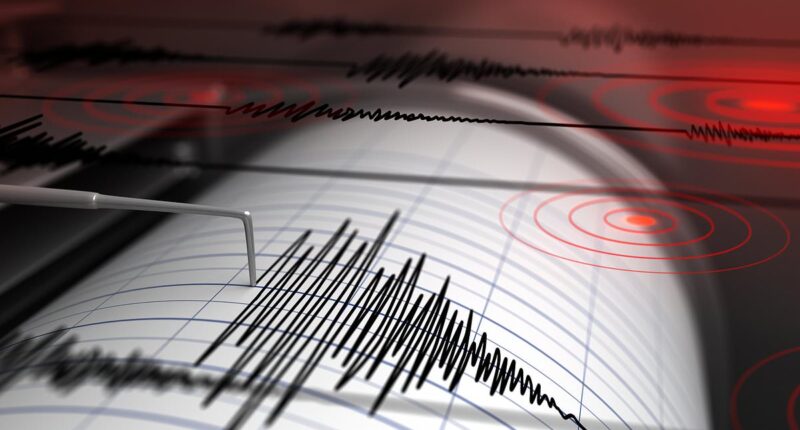Texas has experienced four earthquakes in less than 12 hours, the largest of which measured 4.6-magnitude Tuesday morning.
The United States Geological Survey (USGS) detected the latest tremor in Culberson County around 7am ET.
The first quake, a 2.9-magnitude, hit Monday night at 11pm near Mentone.
It was followed by a 3.4-magnitude at 3am Tuesday and a 2.5-magnitude about 1.5 hours later.
The latest seismic activity was felt as far north as Roswell, New Mexico.
The swarm comes shortly after a rupture of a natural gas pipeline in the Permian Basin, resulting in a 5.0-magnitude quake approximately 40 miles north of the recent cluster.
The epicenter of the February 15 earthquake was located 33 miles west of Toyah and 53 miles south of Carlsbad.
These towns are just miles away from those hit by the recent seismic events. However, officials have not linked the rupture to them as of yet.

Texas has experienced four earthquakes in less that 12 hours with the largest clocking in at a 4.6 magnitude that hit Tuesday morning
While West Texas does not lie on a single major fault line, it does have multiple fault zones, which are regions of the earth’s crust where rocks deform due to faulting.
Nevertheless, seismic activities in the area are largely attributed to human practices linked to oil and gas operations, such as fracking and the disposal of wastewater.
More than 3,600 earthquakes have been reported in Texas since 1900, with more than 70 reaching a magnitude 4 or higher and seven over a magnitude 5.
The 4.6-magnitude had a very shallow depth of just four miles, suggesting it was felt widely throughout West Texas, southern New Mexico and northern Mexico.
No significant damages or injuries have been reported at this time.
The USGS shows a 39 percent change of a 3.0-magnitude or above after shock hittin within the next week and a 12 percent change of another 4.0-magnitude or more.
There is a two percent change of a major 5.0-magnitude quake.
The major 5.0-magnitude quake that hit over the weekend was followed by at least 16 aftershocks, ranging in magnitudes from 1.4 to 3.8, The Watchers reported.

The 4.6-magnitude had a very shallow depth of just four miles, suggesting it was felt widely throughout West Texas, southern New Mexico and northern Mexico
The activity was caused by the second pipeline failure in the area within eight months and the third in 19 months, renewing concerns over the link between fracking activities and seismic events in the region.
Fracking involves miners drilling deep into the earth’s surface and releasing high-pressure water that creates a small explosion to release natural gas and oil that can be used to create energy.
Texas is listed as the number one state for fracking, and as of February 2017, it was home to 279,615 oil and gas wells but by 2023, that number had increased to 373,133 active wells.
The action brings groundwater to the surface and when it is injected back into the ground, it puts pressure on fault lines, resulting in more earthquakes.

Texas is listed as the number one state for fracking, and as of February 2017, it was home to 279,615 oil and gas wells but by 2023, that number had increased to 373,133 active wells
‘The practice of deep injection of oil field wastewater, known as saltwater disposal, has the strongest tie to the increase in the rate of earthquakes and to the strongest earthquakes that have occurred in recent years,’ said Peter Hennings, research professor at The University of Texas’s Bureau of Economic Geology.
Researchers from Southern Methodist University in Texas found in 2015 that the state’s earthquakes were due to fracking.
They looked at 84 days from November 2013 to January 2014, finding 27 magnitude two or greater earthquakes hit around Azle that is home to fracking practises.
Matthew Hornbach, a Southern Methodist University geophysicist, said the timing and location of the quakes correlates better to the drilling and injection than any other possible reason.
‘There appears to be little doubt about the conclusion that the earthquakes were in fact induced,’ USGS seismologist Susan Hough, who wasn’t part of the study team, said.
‘There’s almost an abundance of smoking guns in this case.’
Massive amounts of brine taken out of the ground with the gas, said study co-author William Ellsworth of the USGS. Removing the saltwater changes the underground pressure.
But the deep injection of the wastes still is the principle culprit, Ellsworth said.
Azle sits atop the large underground Barrett Shale natural gas formation.

















